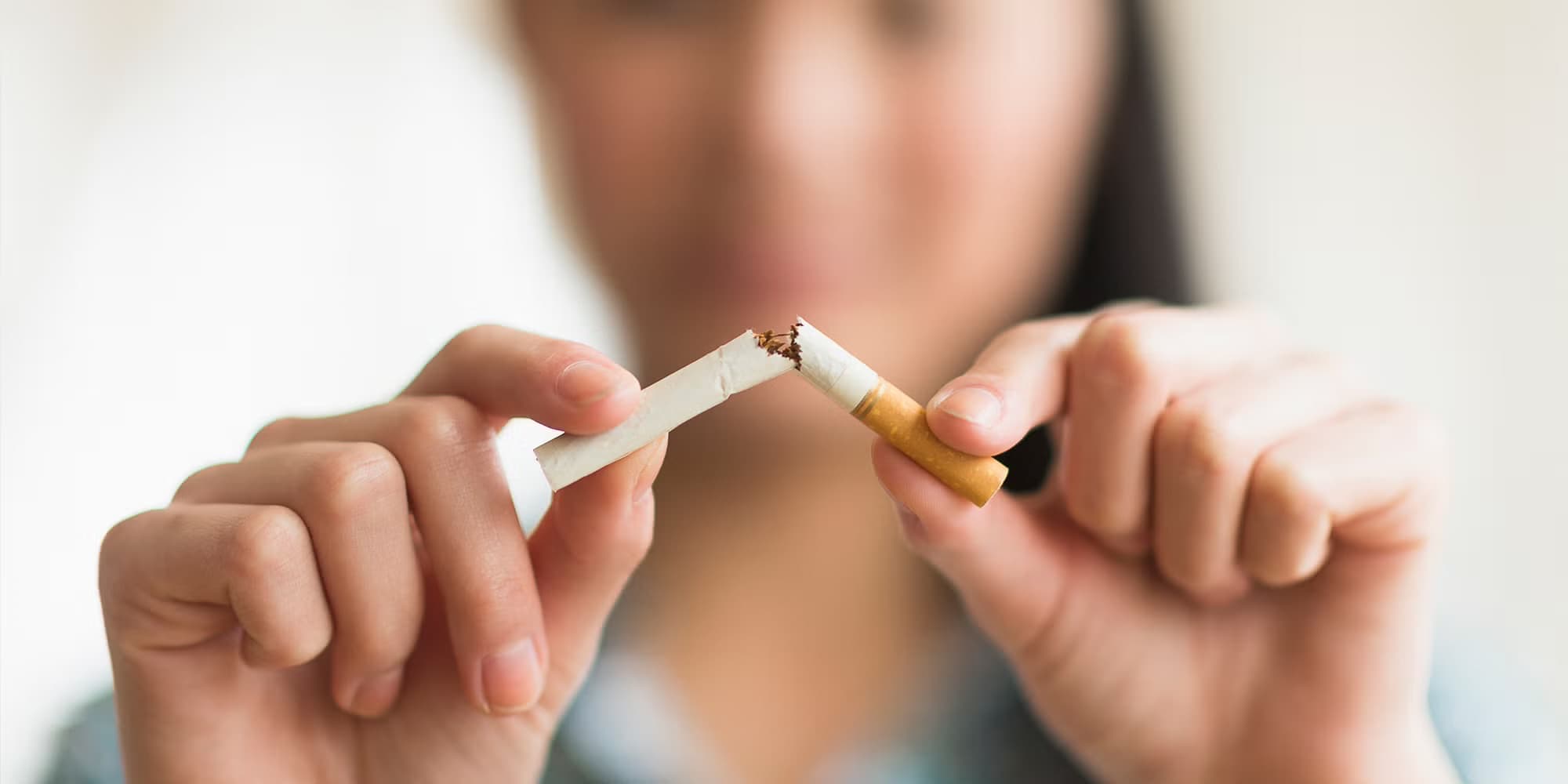Weight Gain After Quitting Smoking and Electrical Muscle Stimulation (EMS)
What to Expect, Why It Happens, and How to Stay in Control

TL;DR
Problem: After you quit, appetite rebounds, daily burn dips, and snacking creeps in; +9–11 lb (4–5 kg) is common.
Solution: Do EMS once a week (20 minutes) with a coach to keep muscle and routine. Add 2× brisk 20–30 min walks, protein at each meal, and a simple if-then plan for cravings.
Payoff: Stay smoke-free, hold the line on weight, feel stronger. Add a second weekly EMS only when recovery feels solid.
Quitting is the win. A few extra pounds are manageable – and you don’t have to choose between your lungs and your waistline. Here’s a clear, research-based plan for handling post-quit weight gain and how coach-led EMS strength training in Chicago can help you stay active, build muscle, and protect your health.
The reality: weight gain after quitting is common, not permanent
Most people gain some weight after they stop smoking. Reviews report an average increase of about 9–11 lb (4–5 kg) in the first year, with most of it in the first three months – but there’s wide variation (some lose weight; a minority gain more than 22 lb (10 kg)).
Even when weight goes up, quitting still wins on health: large studies show lower all-cause and cardiovascular mortality in quitters despite weight changes.
Why weight creeps up after you quit
- Appetite rebounds – nicotine suppressed appetite; without it, hunger and food reward often rise.
- Slight metabolic dip – nicotine modestly raised energy expenditure; removing it can nudge daily burn down.
- Habit substitution – snacking can slip into the hand-to-mouth routine cigarettes used to fill.
What EMS adds to your plan (and what it doesn’t)
Electrical muscle stimulation (EMS) contracts major muscle groups while you perform guided movements, letting you train efficiently with low joint stress – ideal while you’re managing cravings, energy swings, and a busy schedule. Whole-body EMS (WB-EMS) programs have shown strength and lean-mass gains and, in some studies, fat-mass reductions in adults.
At Fit in 20, we use FDA-cleared equipment in the “powered muscle stimulator” category (21 CFR 890.5850) for muscle conditioning, and sessions are coach-supervised with health screening.
Straight talk: EMS isn’t a magic fat-loss device. It’s a smart, time-efficient way to keep training while your body adjusts to life without nicotine.
A 4-week, quit-friendly movement plan
The aim: preserve or increase lean muscle, keep metabolism steady, and give you a positive outlet for stress.
Weeks 1–2 – Settle in
- 1×/week EMS (20 minutes) focused on full-body strength (coach sets conservative intensity).
- 2× brisk walks (20–30 minutes) on separate days – fresh air helps with urges.
- Craving rule: when an urge hits, do one minute of movement (stairs, air squats, or a short walk) before any snack.
Weeks 3–4 – Build momentum
- 1–2×/week EMS (progress intensity as tolerated).
- 1–2× easy cardio sessions (20–30 minutes) – conversational pace.
- “Snack swap” habit: pair cravings with high-protein options (Greek yogurt, jerky, edamame) and pre-cut fruit/veg.
Small tactics that make a big difference
- If-then plans – If I want a cigarette or a sugary snack, then I drink water, chew gum, or walk for 3 minutes. Save two go-to plans on your lock screen.
- Habit bundling – only listen to a favorite podcast while walking; only scroll social on a bike.
- Make the default easy – keep protein snacks visible; keep trigger foods out of sight (or out of the house for Month 1).
- Track tiny wins – mark craving deflections and sessions done, not just scale weight. Momentum beats perfection.
- Identity first – tell yourself, “I’m a non-smoker who trains.” Choices follow identity.
Eating to blunt post-quit weight gain
- Front-load protein (20–30 g) 3–4×/day for muscle support and satiety.
- Add fiber at every meal (veg, beans, oats) to smooth appetite swings.
- Hydrate generously – thirst often masquerades as hunger early on.
- Avoid crash diets in Month 1 – big restriction can spike cravings and relapse risk; aim for steady meals.
- Coffee check – if coffee triggers snack binges or old cues, pair it with fruit/protein or switch to tea for a bit.
Safety first – who should pause or talk to a clinician
EMS is safe for most people when coach-supervised on FDA-cleared systems, but it isn’t for everyone. If you have cardiac devices (e.g., pacemaker), are pregnant, or have specific medical conditions, get medical clearance before training. We screen before sessions and can coordinate with your provider.
Is “dieting while quitting” worth it?
It’s tempting to clamp down on calories right away, but evidence is mixed. A 2021 Cochrane review found no intervention with moderate-certainty evidence for preventing long-term weight gain after quitting. Priority one is staying smoke-free; then we fine-tune body composition with steady training and pragmatic nutrition.
You’ve already made the hardest decision – to quit. We’ll make the next step simple: a coach-led, 20-minute EMS session that fits your week, keeps you moving, and helps you feel in control.
Register now.
Register for a free trial session
Experience an innovative training method that makes every moment count. Energize your body, build strength, and see how training in the suit can fit perfectly into your week.
First session free (~30 min)




